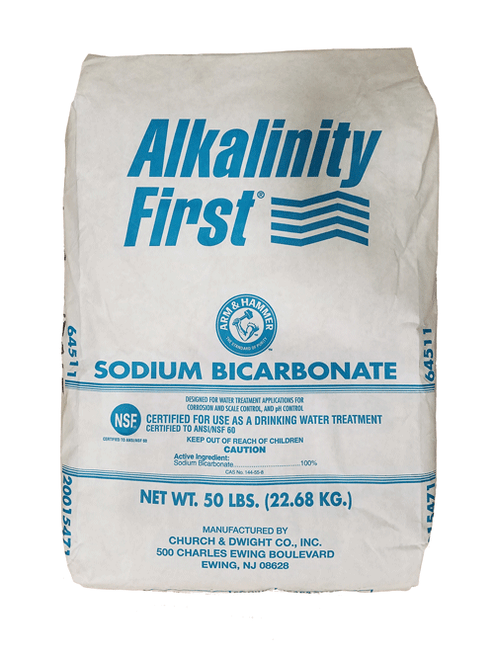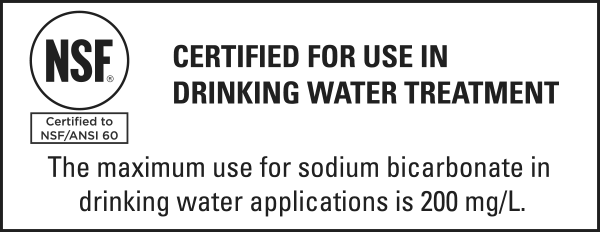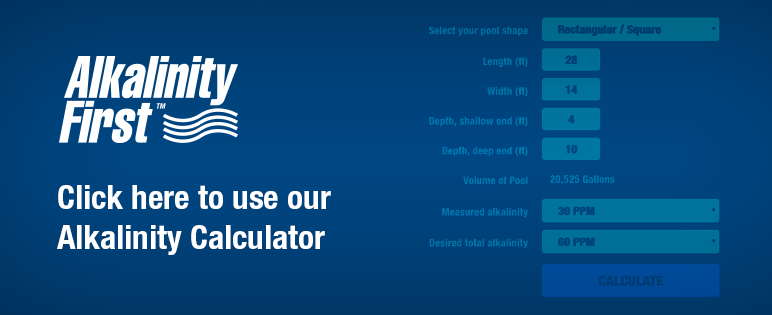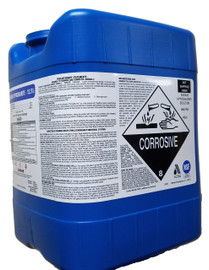
Alkalinity First - Sodium Bicarbonate 50 lbs Bag - NSF Listed
- Brand
- Church and Dwight
- SKU:
- 10-1405
- Weight:
- 50.00 LBS
- Shipping:
- Calculated at Checkout
Alkalinity First - Sodium Bicarbonate 50 lbs Bag - NSF Listed
Pools & Water Treatment
Water, Improved by ARM & HAMMER™
Reliable management of pH and alkalinity plays a key role in water quality. ARM & HAMMER™ products are known for quality performance, helping make pool water safer to swim in, drinking water safer to ingest, and for assisting in cleanup and remediation of wastewater.
Our Alkalinity First™ sodium bicarbonate handles easily, doesn’t dust, and dissolves quickly making it ideal for a variety of water treatment applications.
Church & Dwight offers a number of products that bear the NSF mark, which indicates compliance with NSF/ANSI Standard 60 for water treatment chemicals.

Pool & Spa
The Trusted Choice for Balanced Water
pH is the measure of relative acidity and basicity on a scale of 1 to 14. The preferred pH for pool water is specified by the Association of Pool & Spa Professionals (ASPS) as 7.2 to 7.8, with 7.4 to 7.6 considered ideal.
When pH is too low, staining and corrosion of pool surfaces and metal fittings can occur. When the pH is too high, scaling and cloudy water can result. Chlorine inefficiency and eye irritation can occur when the pH deviates from either end of the recommended range — either too high or too low.
Maintaining pool pH at the high end of the acceptable range will help reduce the formation of eye and skin-irritating chloramines. Chloramines also tie up chlorine and reduce its effectiveness in killing bacteria and algae. Bathers introduce ammonia and amines into the pool through their perspiration and other body fluids. The chemical reaction of ammonia and amines with chlorine creates mono-, di-, and tri-chloramines. Although the chemistry is fairly complex, the tendency for chloramines to form and persist in pool water is significantly reduced when pH is maintained at the high end of the acceptable range.
Total Alkalinity
Total Alkalinity is essentially a measure of dissolved bicarbonates in water. It is also a measure of the ability of water to resist changes in pH when acids (low pH) or bases (high pH) are added.
The total alkalinity of a swimming pool should be kept sufficiently high to stabilize pH, optimize sanitizer efficiency, and help prevent corrosion, but low enough to avoid scaling and clouding of hard water. Pool suppliers’ recommendations concerning total alkalinity vary widely, but most of these recommendations fall within the range of 80-150 ppm (parts per million) of alkalinity. The higher ranges are recommended when the pool water pH will tend to drift down, as in rainy seasons, and when acidic sanitizers are used.
The Relationship Between Pool pH & Alkalinity
Research studies have shown that there is clearly a relationship between pool pH and total alkalinity present in water. In general, when alkalinity increases, the pH of the pool tends to be higher. More specifically, when alkalinity is adjusted to the range of 80 to 150 ppm, it maximizes the likelihood that the pool pH will hold in the range of 7.2 to 7.8.
Potable Water
Corrosion Control in Municipal Water Systems
Drinking water suppliers in many parts of the United States and Canada have difficulty in meeting EPA standards for allowable traces of lead and copper in potable water. In addition, a given municipality’s method of corrosion control can significantly impact overall operational costs over and above those in place for metals control.
Bicarbonate alkalinity exists naturally in most water supplies. Waters deficient in this parameter due acid rain or other causes are often corrosive. Supplementing waters with sodium bicarbonate to restore the alkalinity level between 30 and 40 mg/L as CaCO3 (and an optimum pH between 7.5 and 8.5) reduces the corrosiveness of the water and creates a thin, tenacious, carbonate coating on the interior of lead and copper pipes. This coating seals water out of the interior surface of the pipes, and reduces metal leaching.
Wastewater Treatment
Alkalinity Control for Wastewater Treatment
Sodium bicarbonate is an ideal pH and alkalinity control agent for wastewater treatment. It provides a reserve buffering ability to help prevent upsets in the operating systems of secondary treatment plants that depend on microorganisms to digest organic wastes and control odor.
Acids produced in the waste breakdown process, along with other conditions prevalent in treatment plants tend to lower pH. This alters the biological balance, and can result in bulking sludge, digester upset and the “rotten egg” or hydrogen sulfide odor that usually means trouble and expense for the plant.
Because sodium bicarbonate is buffered, it cannot cause the pH overrun that harsh alkaline chemicals like lime, caustic soda and ammonia can. It can be slug-fed or added continuously to digesters at the operator’s discretion.
In aerobic digestion systems, the optimum feed point is the return sludge line, or at the head of the aeration basin. Since low loading takes place at most wastewater treatment plants during the night, sodium bicarbonate is added in the late afternoon or early evening for best results.
With anaerobic systems, it is recommended that product be applied in the wet well or scum pit on the sludge line leading to the digester. Sodium bicarbonate should be fed in a manner that promotes maximum distribution throughout the digester.
Additional Information
SDS
Please call for questions or technical assistance! 714-564-9100





















